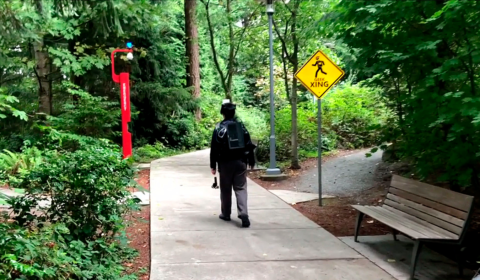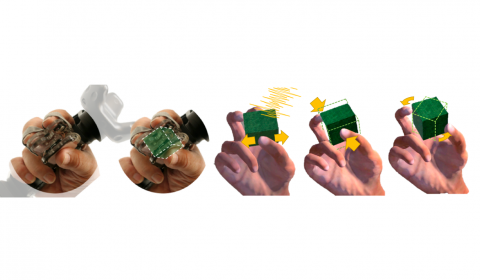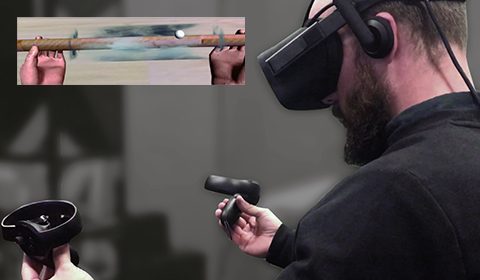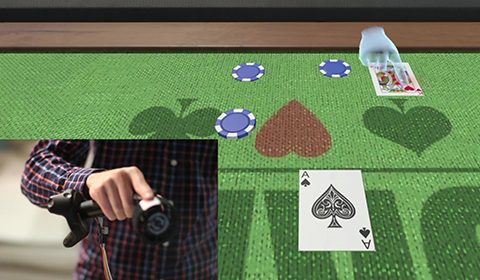Microsoft Research blog

A new era of spatial computing brings fresh challenges—and solutions—to VR
Virtual reality (VR) has continually pushed the boundaries of how we perceive, from its early days of Ivan Sutherland’s Sword of Damocles to today. With the technology emerging from its early stages of bulky equipment tethered to one place out of necessity, researchers now are working with increased possibilities derived from hardware and new input sensors. The result is a unique set…

Introducing TORC: A rigid haptic controller that renders elastic objects
| Mar Gonzalez Franco and Eyal Ofek
Oxymorons of haptics might be the new normal Consumer virtual reality (VR) systems can immerse users in wonderous virtual worlds, rich in sights and sounds. However, how many times have you reached for an object in VR or augmented reality…

Uncanny Valley and the Sense of Touch
The notion of an “uncanny valley” is well known in robotics[1]. This is when increasing the realism of a robot’s human-like appearance can lead to feelings of unease—or even revulsion—as a robot becomes more and more (but never quite fully)…

Touching the Virtual: How Microsoft Research is Making Virtual Reality Tangible
“Ask yourself how you really want to interact with virtual objects? The simple answer is that we want to handle them as if they are real, just reach out a hand to grasp them, pick them up, feel what they’re…
Touch to Feel the Virtual World
Haptic technology, which simulates the sense of touch through tactile feedback mechanisms, has been described as “doing for the sense of touch what computer graphics does for vision.” Haptics are already common in devices such as smartphones, where touch sensations…
People
Ed Cutrell
Sr. Principal Research Manager
Andy Wilson
Partner Research Manager

